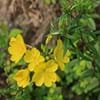Life Span
Perennial
Perennial
Origin
Northeastern United States, Mid-Atlantic United States, Southeastern United States, North-Central United States, Central United States, South-Central United States
North America, United States, Northeastern United States, Mid-Atlantic United States, Southeastern United States, Canada
Types
Apricot Delight, Copper canyon
Red chokeberry, Purple chokeberry
Number of Varieties
Not Available
Habitat
Roadsides, sand dunes, Waste areas
Anthropogenic, Boggy areas, Cliffs, Fens, Swamps, Terrestrial, Wet lands, Woodlands
USDA Hardiness Zone
5-8
3-8
Sunset Zone
1a, 1b, 2a, 2b, 3a, 3b, 4, 5, 6, 7, 8, 9, 10, 11, 12, 13, 14, 15, 16, 17, 18, 19, 20, 21, 22, 23, 24
A2, A3, 1a, 1b, 2a, 2b, 3a, 3b, 4, 5, 6, 7
Habit
Clump-Forming
Thicket/Colonizing
Flower Color
Yellow
Not Available
Flower Color Modifier
Bicolor
Not Available
Fruit Color
Tan
Purplish-black
Leaf Color in Spring
Green
Not Available
Leaf Color in Summer
Green
Not Available
Leaf Color in Fall
Green
Not Available
Leaf Color in Winter
Light Green
Not Available
Leaf Shape
Oblong
Elliptic
Plant Season
Summer
Spring, Summer, Fall
Sunlight
Full Sun, Partial Sun
Full Sun, Partial Sun, Partial shade
Growth Rate
Medium
Medium
Type of Soil
Loam, Sand
Clay, Loam
The pH of Soil
Acidic, Neutral, Alkaline
Acidic, Neutral, Alkaline
Soil Drainage
Well drained
Average
Bloom Time
Early Summer, Summer, Late Summer
Late Spring, Early Summer
Tolerances
Variety of soil types
Not Available
Where to Plant?
Container, Ground, Pot
Ground, Pot
How to Plant?
Divison, Seedlings, Stem Planting
Cuttings, Divison, Seedlings
Plant Maintenance
Low
Medium
Watering Requirements
Average Water Needs, Do Not over Water, Never Over-water, Requires regular watering, Water more in summer
Average Water Needs, Do Not over Water, Requires regular watering
In Summer
Lots of watering
Lots of watering
In Spring
Moderate
Moderate
In Winter
Average Water
Average Water
Soil pH
Acidic, Neutral, Alkaline
Acidic, Neutral, Alkaline
Soil Type
Loam, Sand
Clay, Loam
Soil Drainage Capacity
Well drained
Average
Sun Exposure
Full Sun, Partial Sun
Full Sun, Partial Sun, Partial shade
Pruning
Remove damaged leaves, Remove dead branches, Remove dead leaves, Remove dead or diseased plant parts
Prune after flowering, Remove branches that rub together, Remove damaged leaves, Remove dead branches, Remove dead leaves, Remove diseased branches by the tool's blades dipped into the alcohol solution
Fertilizers
All-Purpose Liquid Fertilizer, fertilize in growing season
10-10-10, All-Purpose Liquid Fertilizer, Apply N-P-K
Pests and Diseases
Slugs, Snails
Red blotch
Plant Tolerance
Variety of soil types
Not Available
Flower Petal Number
Single
Not Available
Foliage Texture
Fine
Not Available
Foliage Sheen
Matte
Not Available
Attracts
Insects
Not Available
Allergy
Abdominal pain, Constipation, Diarrhea, Skin irritation
Anaphylaxis
Aesthetic Uses
Beautification, Borders, Landscape Designing, Showy Purposes
Showy Purposes
Beauty Benefits
Good for skin, Making cosmetics, Stops hair loss
Good for skin
Environmental Uses
Air purification, Food for insects, Versatility
Air purification, Food for birds, Wildlife
Medicinal Uses
Eczema
anti-cancer, Antioxidants, Cold
Part of Plant Used
Root
Fruits
Other Uses
Decoration Purposes, Medicinal oil, Showy Purposes, Used as Ornamental plant, Used for its medicinal properties
Pectin
Used As Indoor Plant
Yes
No
Used As Outdoor Plant
Yes
Yes
Garden Design
Edging, Feature Plant, Groundcover, Mixed Border
Foundation, Mixed Border
Botanical Name
OENOTHERA 'Cold Crick'
ARONIA melanocarpa
Common Name
Suncups, sundrops
Black Chokeberry
In Hindi
Evening Primrose
Black Chokeberry Shrub
In German
Evening Primrose
Schwarz Aronia Strauch
In French
onagre
Noir Chokeberry Arbuste
In Spanish
onagra
Chokeberry negro Arbusto
In Greek
Νυχτολούλουδο
Μαύρο Chokeberry θάμνων
In Portuguese
Evening Primrose
Chokeberry preto Arbusto
In Polish
wiesiołka
Krzew aronii
In Latin
vespere Primrose
Lichen Frutex
Phylum
Magnoliophyta
Magnoliophyta
Class
Magnoliopsida
Magnoliopsida
Family
Onagraceae
Rosaceae
Clade
Angiosperms, Eudicots, Rosids
Angiosperms, Eudicots, Rosids
Subfamily
Onagroideae
Amygdaloideae
Number of Species
Not Available
Season and Care of Evening Primrose and Black Chokeberry
Season and care of Evening Primrose and Black Chokeberry is important to know. While considering everything about Evening Primrose and Black Chokeberry Care, growing season is an essential factor. Evening Primrose season is Summer and Black Chokeberry season is Summer. The type of soil for Evening Primrose is Loam, Sand and for Black Chokeberry is Clay, Loam while the PH of soil for Evening Primrose is Acidic, Neutral, Alkaline and for Black Chokeberry is Acidic, Neutral, Alkaline.
Evening Primrose and Black Chokeberry Physical Information
Evening Primrose and Black Chokeberry physical information is very important for comparison. Evening Primrose height is 1.00 cm and width 0.10 cm whereas Black Chokeberry height is 182.88 cm and width 182.88 cm. The color specification of Evening Primrose and Black Chokeberry are as follows:
Evening Primrose flower color: Yellow
Evening Primrose leaf color: Green
Black Chokeberry flower color: Not Available
- Black Chokeberry leaf color: Not Available
Care of Evening Primrose and Black Chokeberry
Care of Evening Primrose and Black Chokeberry include pruning, fertilizers, watering etc. Evening Primrose pruning is done Remove damaged leaves, Remove dead branches, Remove dead leaves and Remove dead or diseased plant parts and Black Chokeberry pruning is done Prune after flowering, Remove branches that rub together, Remove damaged leaves, Remove dead branches, Remove dead leaves and Remove diseased branches by the tool's blades dipped into the alcohol solution. In summer Evening Primrose needs Lots of watering and in winter, it needs Average Water. Whereas, in summer Black Chokeberry needs Lots of watering and in winter, it needs Average Water.





